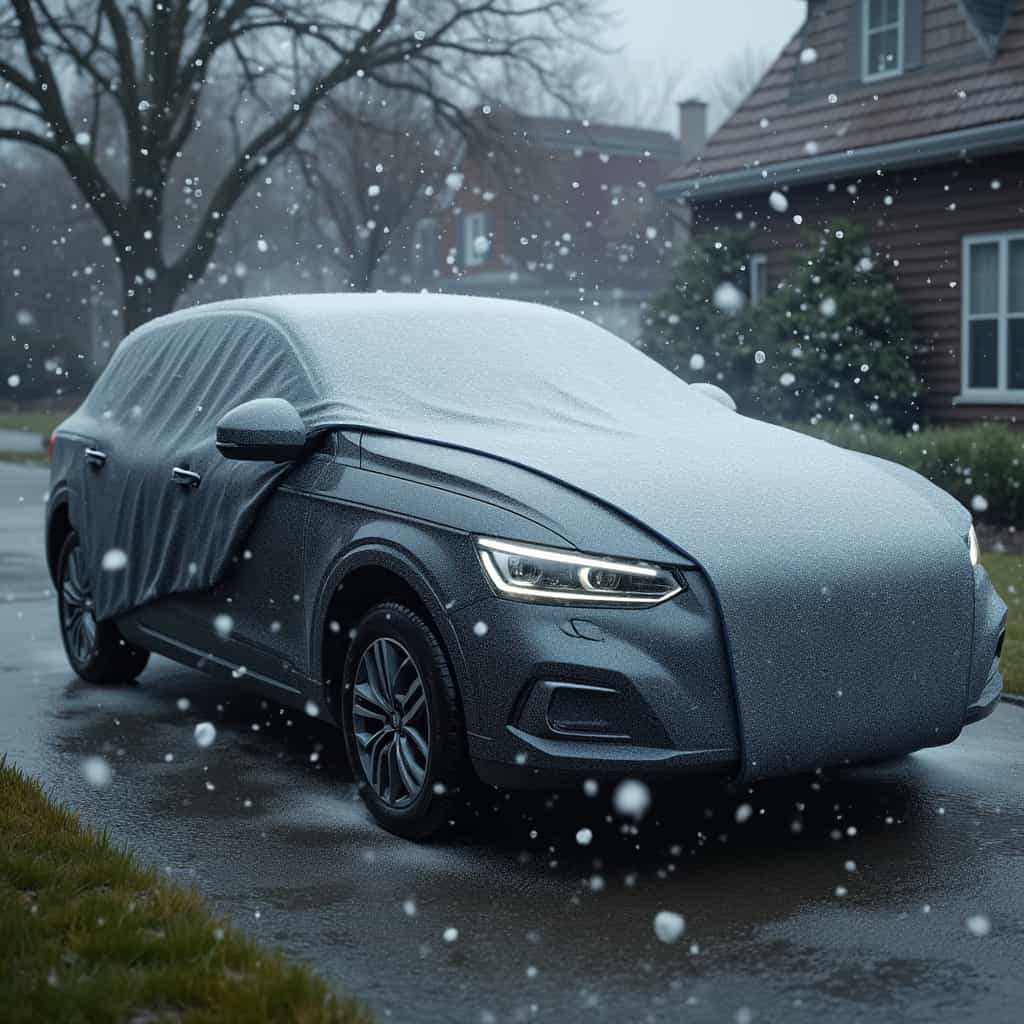In recent years, the automotive accessories market has witnessed a remarkable evolution, particularly in the arena of protective solutions against climate-induced adversities. One of the most disruptive innovations in this sector has been the development of anti-hail car covers. Crafted to withstand intense weather conditions, these covers have become indispensable, particularly as climate change brings more frequent and severe hailstorms across the globe.
Historically, automobile damage due to hail was a regional concern, largely confined to areas known as ‘hail alleys’, such as parts of the United States, Canada, and Australia. However, climate change has expanded these vulnerable zones, increasing the demand for robust protection against hail. According to Frank Olson, a climate scientist specializing in extreme weather events, «We are now seeing hailstorms occurring in areas previously considered low-risk, with stones larger than golf balls becoming more common.»
The anti-hail car covers of 2025 are vastly different from traditional car covers in both design and material composition. Featuring advanced textiles engineered for resilience, these covers comprise multiple layers that effectively absorb and dissipate impact energy. The outermost layer is typically made of high-density polyethylene (HDPE), recognized for its resistance to tears and abrasions. Beneath this is a layer of memory foam that acts as a cushion, while the innermost layer is often crafted from polyester or nylon to prevent scratches on the vehicle’s paint.
One of the significant technological advancements in these covers is the integration of adaptive technology. Many models now feature a surface embedded with micro-sensors that detect incoming hail and signal the foam layer to adjust its density, thereby optimizing impact absorption. This cutting-edge feature highlights the increasing intersection of technology and traditional auto accessories. Victor Herrera, an engineer at WeatherGuard Innovations, comments, «The integration of smart technology into ordinary products is the future. Not just does it enhance functionality, but it also increases user confidence in the product’s effectiveness.»
When it comes to functionality, these covers are designed to be user-friendly. They are usually lightweight and compact, enabling easy storage and quick deployment. An average anti-hail car cover can be installed by one person in less than five minutes. Many versions come with straps and buckles to ensure the cover remains secure even in windy conditions. Some high-end covers are equipped with automatic deployment systems, activated remotely or via a weather alert app.
In terms of cost, the price range for anti-hail car covers varies significantly. Basic models in 2025 typically start around $150, offering essential protection and durability. Mid-range options, priced between $300-$600, often include enhanced features such as UV radiation resistance and better weatherproofing. Premium models, which can cost upwards of $1000, boast advanced smart technology and superior multi-layer systems. Despite the substantial upfront cost, many consumers view these covers as a worthy investment, especially when weighed against the costly repairs associated with hail damage, which can average $3000 per incident.
Market analysis reveals interesting trends in the geographical distribution of these covers’ sales. Predictably, regions known for frequent hailstorms, like the central United States, report the highest sales figures. Texas, Oklahoma, Kansas, and Colorado lead the pack, with residents understanding firsthand the cost-saving benefits of preventive measures. In Europe, countries like Germany, France, and Italy are seeing increased adoption as climate change alters their weather patterns. In contrast, despite recurring storms, countries in Asia have yet to fully embrace these covers, although forecasts predict significant market growth there by the end of the decade.
While the efficacy of anti-hail car covers is widely acknowledged, skeptics argue about the environmental impact of their production. Many covers are not biodegradable, raising concerns about their lifecycle and disposal. Manufacturers are gradually addressing these issues; some are developing covers from recyclable materials, while others have initiated return-and-recycle programs. Eco-conscious consumers are becoming increasingly vigilant, pushing the market towards sustainable practices.
The narrative surrounding these covers is not just one of necessity, but also innovation. Anti-hail car covers have been a subject of innovation competitions and industry expos. Notably, the 2024 Auto Accessories Expo in Berlin showcased a prototype cover that doubles as a solar panel array when not in use, an invention that excited both industry insiders and environmental advocates alike. This dual-functionality might well be the future of such products, providing protection and contributing to renewable energy efforts simultaneously.
In conclusion, as the automotive industry continues to tackle the challenges posed by climate change, innovations like anti-hail car covers represent a crucial step towards enhancing vehicle resilience. While there are hurdles to overcome, particularly in terms of environmental impact, the functionality and protection these products offer make them a valuable addition to any vehicle owner’s repertoire. As weather patterns become increasingly unpredictable, investing in advanced protective solutions is not only practical but essential.
You may also like
Top 10 Deep Fryers
This article delves into the top ten oil fryers available in the market, discussing their technical features, pros and cons, alongside pricing and warranty details. Aimed at home cooks and culinary enthusiasts, it sheds light on both budget-friendly and high-end models, offering insights into what makes each option unique.
Robotic Lawn Mowers in 2025
In 2025, robotic lawn mowers have revolutionized the way we maintain our gardens. With advanced technologies, these smart devices promise the allure of a pristine lawn with minimal effort. This article delves into the technical characteristics, pros and cons, costs, and warranty details of various models available on the market.
The Gaming Desk Revolution: Ergonomics, Features and Market Trends
In 2025, gaming desks have evolved significantly, focusing on ergonomic designs and advanced features to enhance user comfort and performance. This article explores the technical characteristics, advantages, and drawbacks of various models, offering insights into price ranges and warranty options.
The Best Toasters of 2025
In 2025, the world of toasters is more advanced than ever before. This article reviews the top contenders, examining their technical features, benefits, and potential drawbacks. We also explore pricing and warranty options to help consumers make informed decisions.
